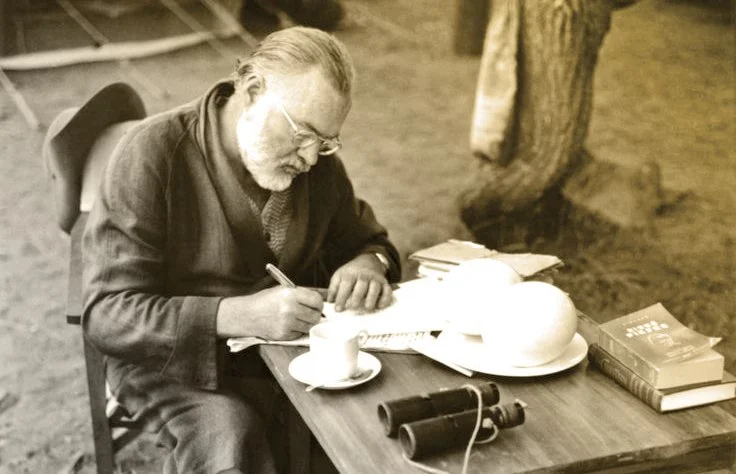
The Work
-

Three Stories and Ten Poems
1923 — This early collection introduces Hemingway’s emerging voice through spare, emotional storytelling and impressionistic poetry. It offers a raw glimpse into themes he would explore more deeply in later works.
-

In Our Time (Paris Edition)
1924 — Hemingway’s experimental first collection of vignettes captures the trauma and alienation of the postwar world. It marks a radical stylistic shift in 20th-century literature.
-
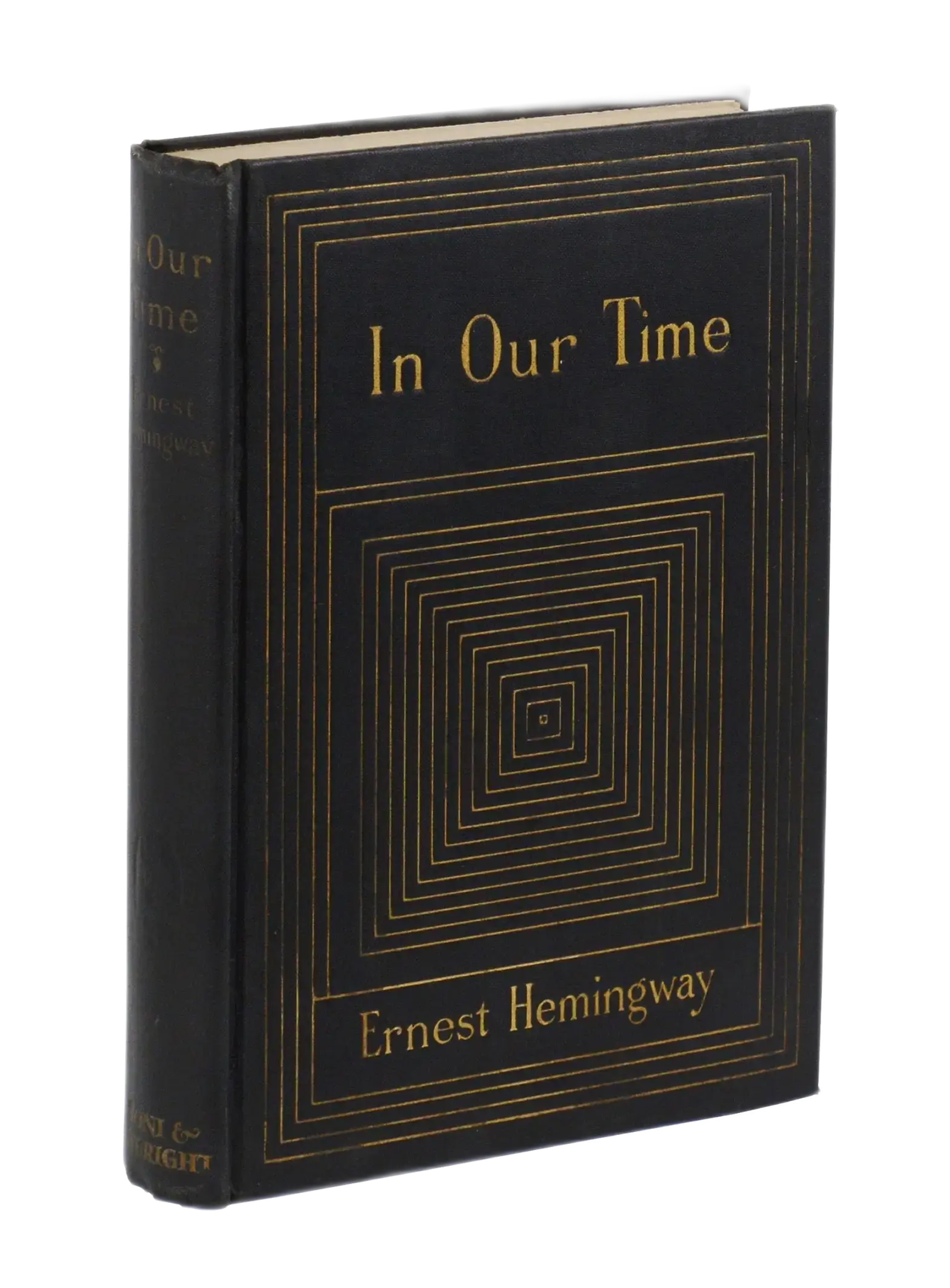
In Our Time
1925 — This expanded edition combines Hemingway’s war vignettes with short stories that introduced readers to his iconic style. It’s a foundational text that established his voice in American literature.
-

The Sun Also Rises
1926 — Quickly approaching its centennial anniversary in 2026, The Sun Also Rises follows a group of American and British expatriates as they travel from Paris to Pamplona for the Festival of San Fermín, where they witness the running of the bulls. An early modernist classic, the novel received mixed reviews upon release, but over time it has become one of the defining works of 20th-century literature. Hemingway biographer Jeffrey Meyers calls it “Hemingway’s greatest work.”
-
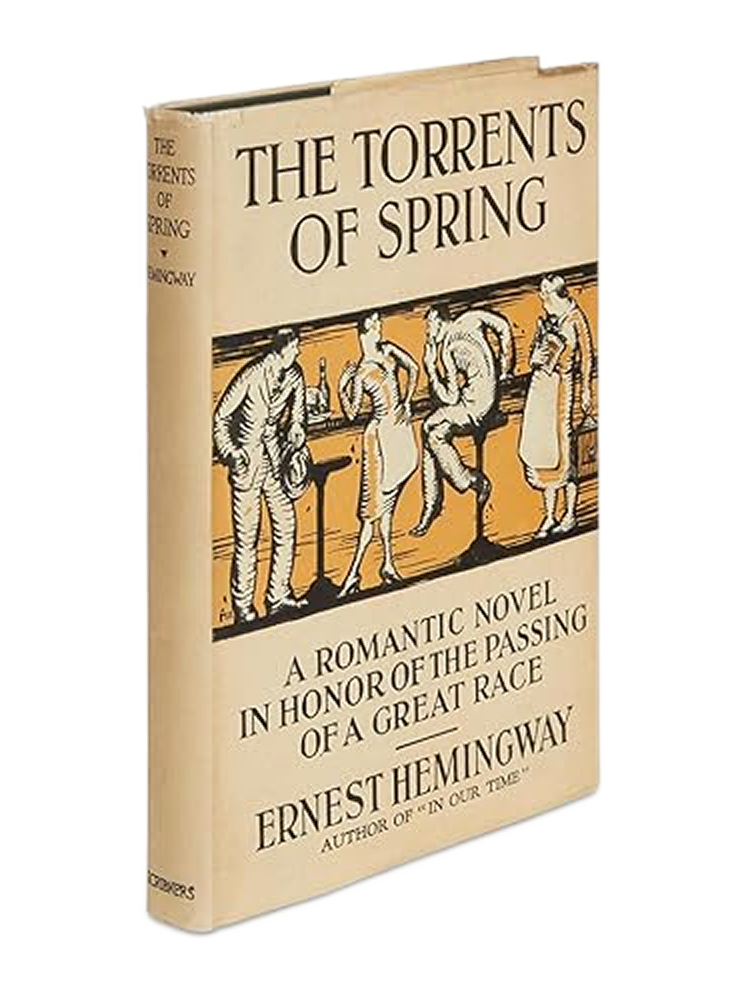
The Torrents of Spring
1926 — The Torrents of Spring is Ernest Hemingway’s first long-form work and a sharp, satirical novella that mocks the romanticism and pretension of literary contemporaries like Sherwood Anderson. Set in northern Michigan, the story follows two factory workers—Scripps O’Neill and Yogi Johnson—as they navigate love, loneliness, and absurdity in postwar America.
-

Men Without Women
1927 - Men Without Women is Ernest Hemingway’s second collection of short stories, exploring the emotional lives of men grappling with love, loss, violence, and isolation. Through lean, powerful prose, Hemingway captures the quiet anguish of characters facing the consequences of war, heartbreak, and masculinity.
-

A Farewell to Arms
1929 — Ernest Hemingway’s powerful and semi-autobiographical account of love and survival set against the harrowing backdrop of World War I. The story follows an American ambulance driver serving on the Italian front, and a British nurse whose paths cross amidst the turmoil of war.
-

Death In The Afternoon
1932 — Death in the Afternoon is Hemingway’s deep dive into the ritual and symbolism of Spanish bullfighting, exploring it as a metaphor for life, death, and artistic integrity. Combining reportage with personal philosophy, the book offers insight into Hemingway’s values—honor, courage, and grace under pressure.
-

Winner Take Nothing
1933 — Winner Take Nothing is Hemingway’s third and most somber collection of short stories. These fourteen pieces confront themes of failure, alienation, and moral ambiguity, capturing lives marked by quiet devastation and emotional isolation with Hemingway’s trademark economy of language.
-

Green Hills of Africa
1935 — Green Hills of Africa is an account of a month on safari he and his wife, Pauline Marie Pfeiffer, took in East Africa during December 1933. It is divided into four parts: "Pursuit and Conversation", "Pursuit Remembered", "Pursuit and Failure", and "Pursuit as Happiness", each of which plays a different role in the story.
-

The Snows Of Kilimanjaro
1936 — The Snows of Kilimanjaro is a stark, introspective story of a dying writer reflecting on a life of lost potential and compromised artistic ambition. Set against the harsh African landscape, it explores themes of regret, mortality, and the purity of unrealized greatness.
-

To Have and Have Not
1937 — To Have and Have Not is a dark, Depression-era tale of a smuggler caught between survival and morality in a world divided by class. Set in Key West and Cuba, the novel explores how economic desperation pushes ordinary people into dangerous choices, exposing the harsh realities of inequality and human resilience.
-

The Fifth Column and the First Forty-Nine Stories
1938 — This massive volume combines Hemingway’s only full-length play with his most essential short fiction. It captures the full range of his themes—from political conflict to existential crisis.
-

For Whom the Bell Tolls
1940 — Ernest Hemingway traveled to Spain to cover the civil war there for the North American Newspaper Alliance. Three years later he completed the greatest novel to emerge from “the good fight” and one of the foremost classics of war literature. It tells of loyalty, courage, love, and the death of an ideal.
-
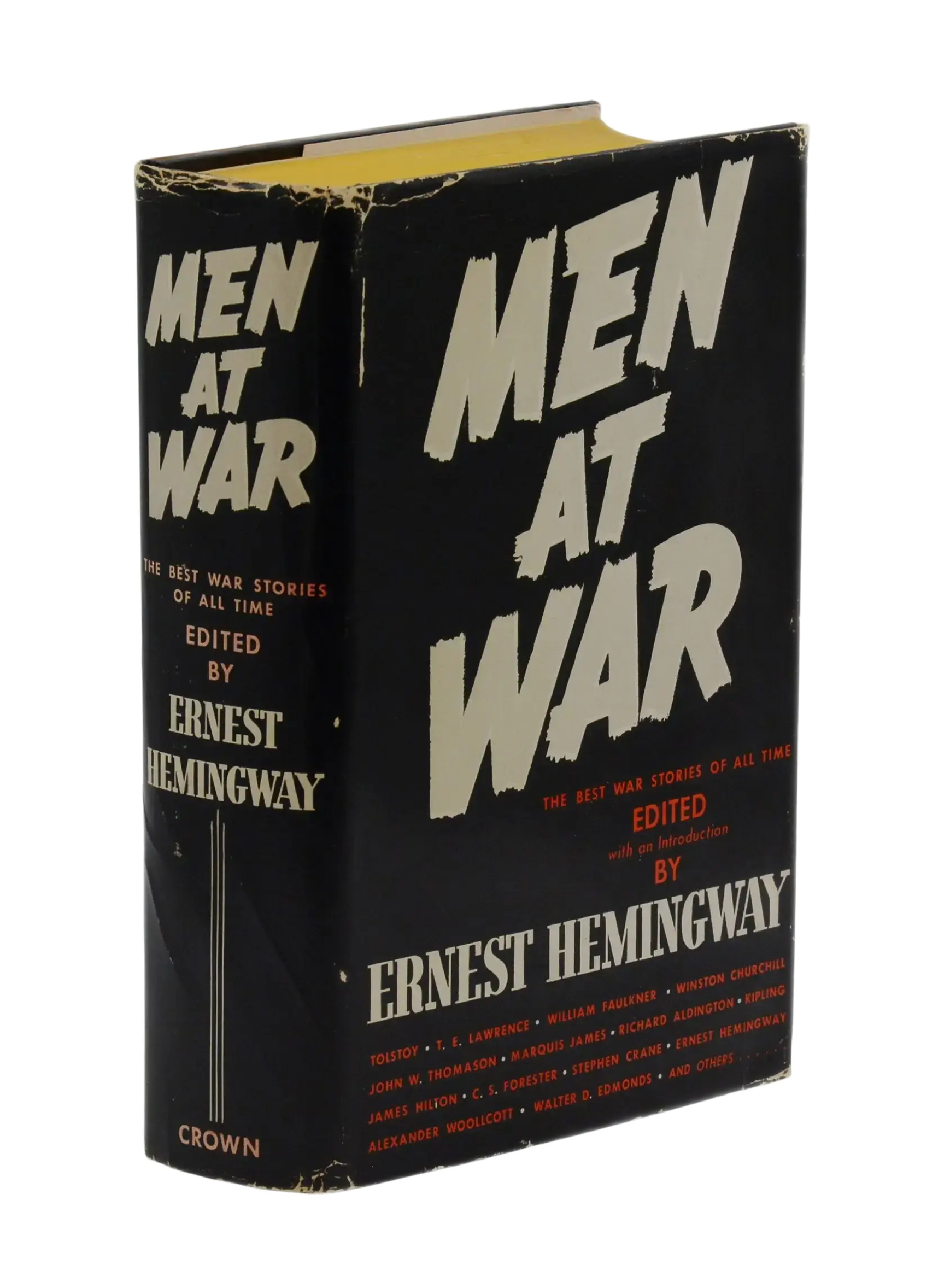
Men At War
1942 — In this anthology, Hemingway gathers great war writing from across history to reflect on the nature of combat. His selections underscore the timeless emotional and moral weight of warfare.
-

Across The River And Into The Trees
1950 — Across the River and Into the Trees follows a dying American colonel in postwar Venice as he reflects on love, loss, and the scars of war during a final weekend with a young countess. Lyrical and melancholic, the novel explores aging, vulnerability, and the search for dignity at the end of life.
-
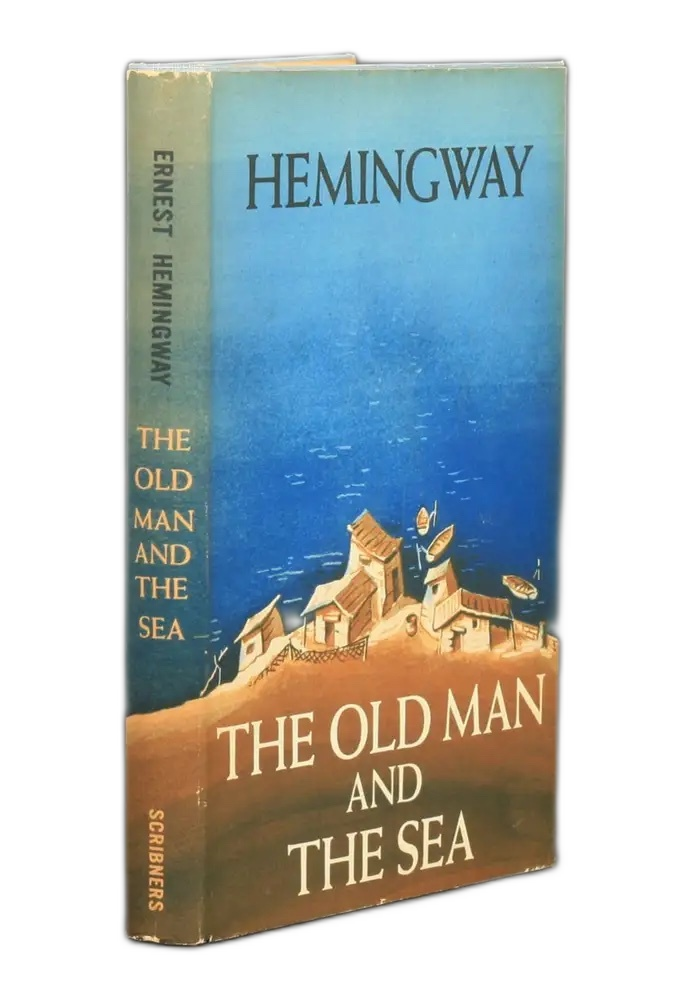
The Old Man and the Sea
1952 — One of Hemingway's most enduring works told in language of great simplicity and power, it is the story of an old Cuban fisherman, down on his luck, and his supreme ordeal — a relentless, agonizing battle with a giant marlin far out in the Gulf Stream.
-
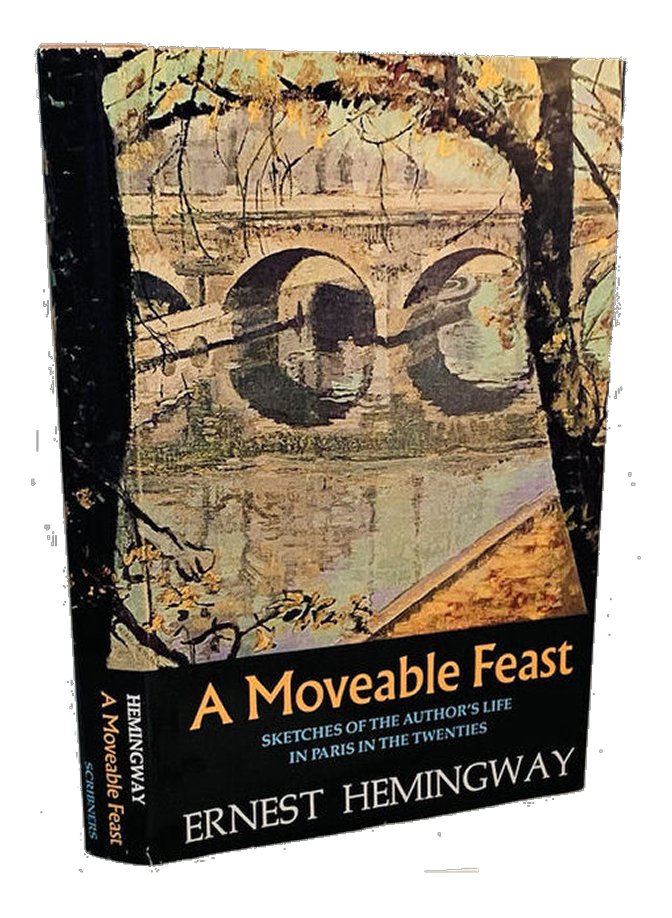
A Moveable Feast
1964 — A Moveable Feast is a memoir by Ernest Hemingway about his years as a struggling expatriate journalist and writer in Paris during the 1920s. It was published posthumously in 1964. The book chronicles Hemingway's first marriage to Hadley Richardson and his relationships with other cultural figures of the Lost Generation in interwar France.
-

Islands In The Stream
1970 — Islands in the Stream follows artist Thomas Hudson through personal loss, artistic solitude, and wartime duty, capturing his emotional evolution across three distinct phases of life. Set in the Caribbean and Atlantic, the novel explores grief, masculinity, and redemption with Hemingway’s signature depth and restraint.
-

The Nick Adams Stories
1972 — The Nick Adams Stories brings together Ernest Hemingway’s most personal character sketches, chronicling the life of Nick Adams from childhood in rural Michigan to the trauma of war and the disillusionment of adulthood. These interconnected stories offer a rare window into Hemingway’s own formative experiences.
-

The Dangerous Summer
1985 — This nonfiction work chronicles a dramatic 1959 bullfighting season in Spain, focusing on a fierce rivalry between two matadors. Hemingway’s keen observations and vivid prose turn sport into myth.
-
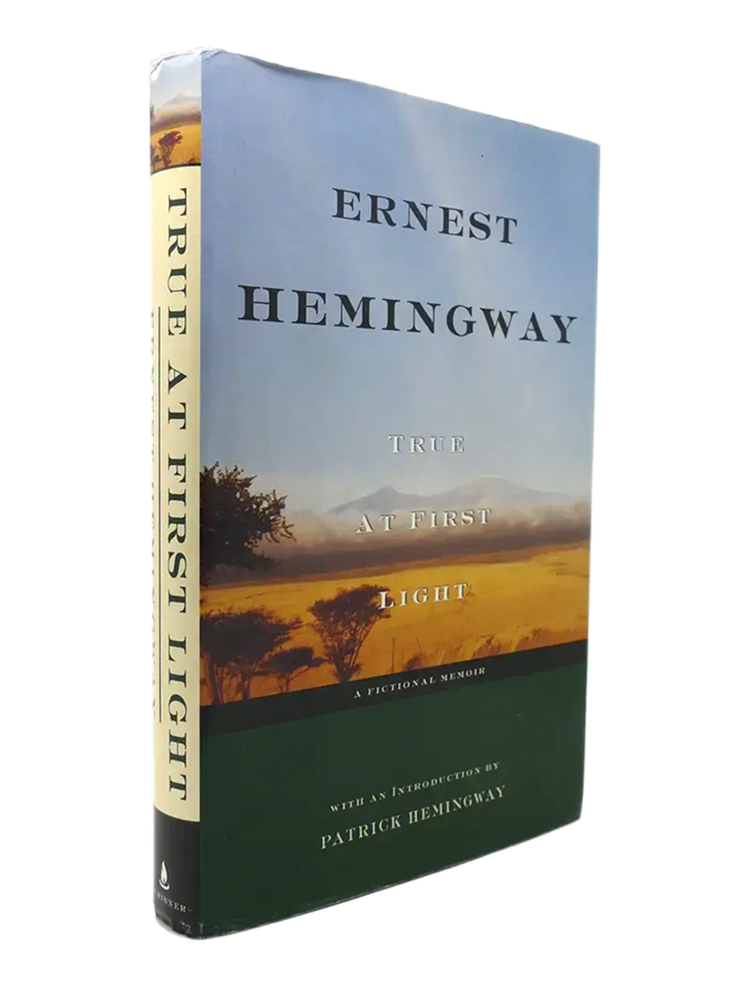
True At First Light
1999 - True at First Light blends memoir and fiction, chronicling Hemingway’s final African safari while exploring themes of identity, aging, colonialism, and creative legacy. Posthumously published, the novel reveals the author’s meditative, late-life voice—both reflective and raw.
-

Under Kilimanjaro
2005 - Under Kilimanjaro is Hemingway’s most complete posthumous work, offering a vivid account of his final African safari. Based on his personal journals, the novel captures the grandeur of the Kenyan landscape while exploring themes of adventure, colonial tension, and Hemingway’s ongoing search for meaning and identity.
-

The Short Stories of Ernest Hemingway
The Collected Short Stories of Ernest Hemingway spans his career, capturing themes of war, love, masculinity, and existential struggle through his signature spare, powerful prose. With iconic stories like The Killers and Hills Like White Elephants, the collection showcases Hemingway’s mastery of subtext and emotional depth.
Articles
by Hemingway
-

Kerensky, The Fighting Flea
December 1917
-

Fine Art
February 1920
-

Marlin Off the Morro
September 1933
-

The friend of spain
January 1934
-

A Paris letter
February 1934
-

Out in the Stream
August 1934
-

Genio after Josie
October 1934
-
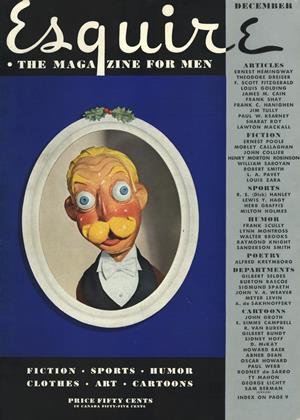
Old Newsman Writes
December 1934
-

Notes on life and letters
January 1935
-

Facing a bitter world
February 1935
-

Sailfish off Mombasa
March 1935
-
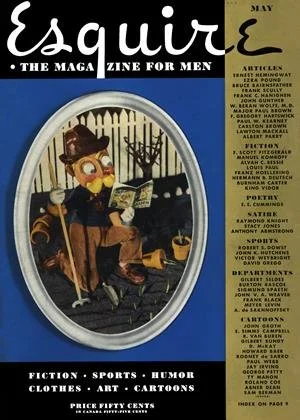
A.D. Southern Style
March 1935
-

The sights of whitehead street
April 1935
-

London Fights the Robots
August 1944
-

The Sling and the Pebble
February 2015
-

Pursuit as Happiness
June 2020
